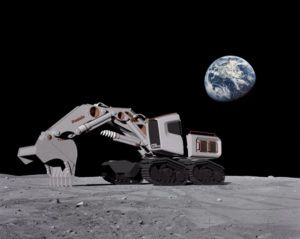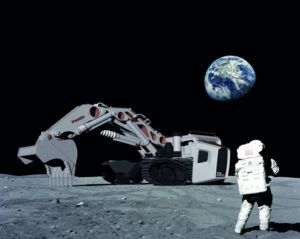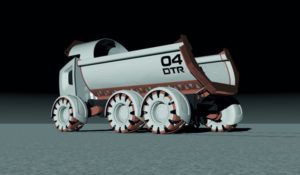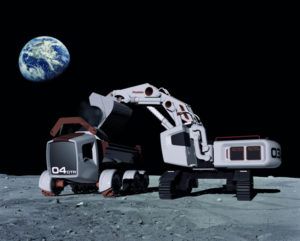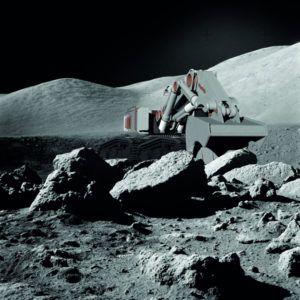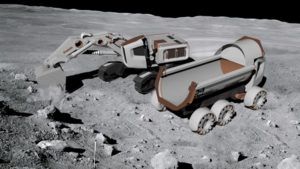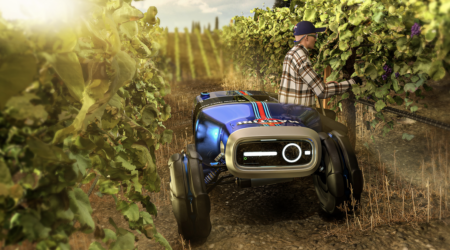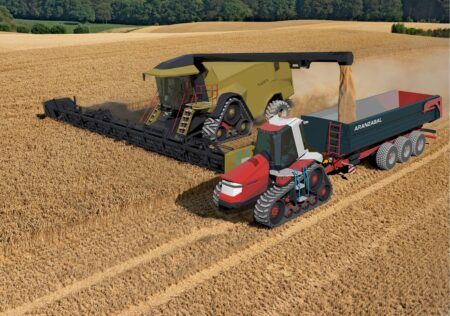This concept excavator and dump truck can work together and they are suitable for moon mining activities.
The materials would need to be of the highest quality aerospace grade so that they will cope with temperatures that can range from around -200°C out of sight of the sun, up to nearly 200°C in full sunlight (-328°F to +392°F). This temperature range requires robust materials whose dimensions have minimal thermal expansion and contraction properties. The boom and stick on the excavator have been built by using transversal tubes and structural elements that would offer both stiffness and flexibility. These cross-elements would create windows on the boom that will improve right-hand-side visibility for the operator.
To minimize their need for external energy delivery, energy recovery systems would be fundamental for the operation of both vehicles; electricity would have to be the base of the drivetrain and the batteries would need to be easily accessible. For the dump truck, the energy recovery would come from regenerative braking systems, while in the excavator the energy-storage cylinders would benefit from the boom and stick being operated by electric motors.
There is no wind or rain on the moon, so every kind of impression left behind on the surface would last for many thousands of years. Such a fragile environment calls for the most effective form of compaction reduction. Thus, instead of a four-wheel driveline, the 40-ton lunar dump truck has been designed with six wide wheels that will distribute the burden. In order to minimize the dust thrown up, the wheels are to be made of metal strips, creating a sort of perforated tire. These flexible wheels, combined with variable suspension, would provide self-leveling transportation suitable for the moon’s topography.
In the case of the 55-ton lunar front-shovel excavator, four independent tracks covered with mudguards reduce compaction while controlling dust. Dividing two conventional tracks would allow a better adaptation to ground conditions. The width of the lunar dump truck has been enlarged for added stability. The same principle is adopted for the lunar-shovel undercarriage.
Although both vehicles would be autonomous, big windshield would add visibility and therefore vehicle control in case of occasional operation by astronauts. To minimize accidents caused by any clumsy movements of humans, access to machines and cabs has been eased by means of parallelogram systems that would place the cabs on the ground. The wide windshield would act as convenient front doors.
CONTACT DETAILS
Web: www.behance.net/albertoseco
Email: albsec@euskatel.net



